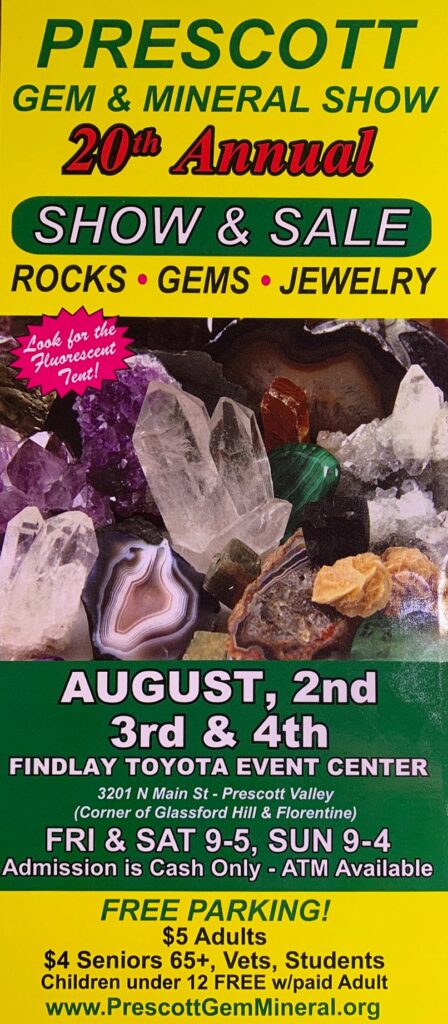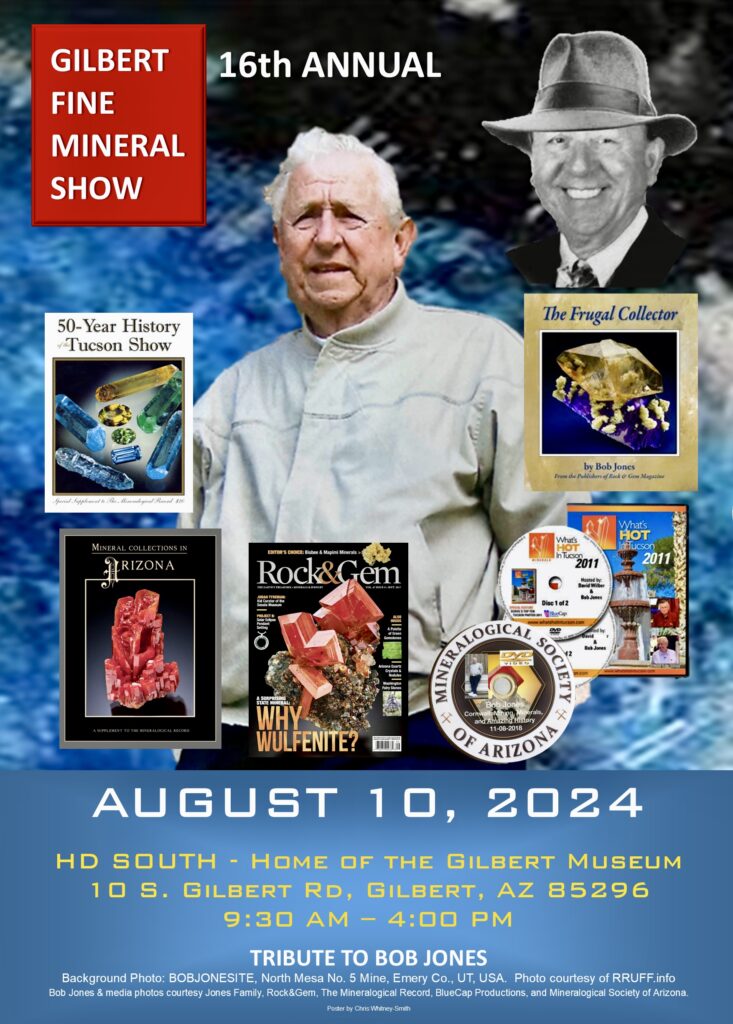A Brief History of the Mineral Collection of the Flagg Mineral Foundation
By Les Presmyk
The collection got its start in 1962 when news that the Loris and Colleen Woolery collection was for sale for the sum of $10,000 caught the interest of the members of the Mineralogical Society of Arizona (MSA). Various MSA members had been considering some sort of memorial effort for Arthur L. Flagg, the Arizona Mineral Museum’s first curator. Acquiring the Woolery collection, which contained some very noteworthy Arizona and worldwide specimens, would represent a fitting tribute.
The A. L. Flagg Foundation for the Advancement of Earth Sciences was then established to honor his memory and provide the non-profit organization to accept donations and buy the collection. Raising that kind of money proved to be a daunting task, until A. E. Goetz (who owned the 79 mine at the time) donated not only the remaining money necessary to buy the collection but additional funds to build the cabinets in which the collection is displayed.
The cases and collection were housed in the meeting room of the Arizona Mineral Museum on the state fairgrounds until the early 1990′s when the museum moved to its current location at 15th Avenue and Washington. The A. L. Flagg Memorial Gallery was constructed on the upper floor, northwest corner of the museum.
This assemblage has formed the backbone of the Foundation collection for these past 40 years. Some of the best Arizona specimens, as well as Mexican and worldwide, are Woolery specimens. Examples include the large Dos Cabezas scheelite, the large Japan-law twin quartz from the Holland mine, and a number of the best Bisbee specimens.
Following that purchase, a display of Mammoth-St. Anthony mine minerals, along with a cabinet and mine schematic, was donated by the members of the Mineralogical Society of Southern California (MSSC) in Mr. Flagg’s honor. The fine leadhillite and the plaque are on display in the Tiger collection on the main floor of the museum.
The next big collection acquired by the Foundation was the Ray and Hazel Wright collection, also from Bisbee. A number of fine Bisbee calcites and a Maid-of-Sunshine mine malachite after azurite now enhance the collection.
Then, in the early 1970′s, Harry and Irene Hill donated the core of the Mammoth-St. Anthony mine collection. The cerussite on dioptase, the wulfenite and cerussite and two fine cerussites are among those specimens that grace this significant part of the collection.
During the 1970′s and 1980′s a number of specimens were donated to the Foundation and packed away in a semi-trailer located at Lindco on South 19th Avenue. There just was not room at the Arizona Mineral Museum for new displays. There had also been a bit of anxiety about whether the museum was going to survive various attempts to cut or eliminate its budget. It was not until the early 1990′s that members of the Foundation, and with the move to the current facility, felt comfortable getting into the trailer to start unpacking all of the materials contained within.
During those glory days, many specimens now on display were unpacked. A very fine malachite on copper from Bisbee, a copper and calcite from Michigan, a copper on calcite from Bisbee, to name a few, as well as the MSSC collection of Mammoth-St. Anthony mine specimens were discovered and unpacked.
Over the past ten years, additional donations have been made and other specimens have been purchased with funds raised by the sale of minerals from the trailer.
Dorothy McKee gave the Foundation over $10,000, which enabled us to purchase a group of specimens from her son’s collection. Tom McKee was a long-time collector and had built one of the finest collections in Arizona. Many of these specimens, predominantly from Colorado and Mexico, are part of the Flagg Gallery cases.
James Horner made two very nice donations of specimens that greatly enhanced the collection’s Tsumeb and worldwide specimens. These minerals include the Moroccan vanadinites and azurites, Tsumeb azurites and calcites, and Bolivian vivianites that are featured on the main floor and Flagg Gallery exhibits.
Through the generosity of John Lucking, Paul Harter, and Les and Paula Presmyk, the Foundation acquired the entire mineral inventory and collection of Sarah Foster. This material has been a significant fund-raising source and included the spectacular Spanish pyrite cluster that is displayed in one of the Flagg Gallery’s worldwide mineral cases.
Other specimens from the collection of John and Terri Schall, Les and Paula Presmyk, and Paul Harter have been donated and are on display on the main floor. These include the Pure Potential vanadinite, the copper and wood from Ray, the Hilltop wulfenite, a Kansas mine azurite and malachite and the large Ray cuprite, to name a few.
One of the largest single donations of specimens in terms of value and quality has come from Gene and Roz Meieran. The pieces are showcased in the new acquistion exhibits on the main floor and include a number of fine calcites, gem minerals and other worldwide pieces.
Wayne Sorenson of Kellogg, Idaho donated the large morganite from Afghanistan and placed on loan the fine French torbernite, the fine calcite on danburite from Mexico, and the very large Tennessee calcite (100+ pounds).
The Board of Trustees has also seen fit to purchase significant specimens when they have been offered. The Tasmanian crocoite, the Mexican creedite, the fine Red Cloud wulfenite, the large and fine San Francisco mine wulfenite near the front entry way of the museum, two chrysocolla pseudomorphs, one from Miami and one from Ray, a large Arizona fluorite and most recently, a suite of 79 mine minerals are now in the collection due to the Board’s recognition that these siginificant specimens needed to stay in Arizona.
The Foundation is in constant need of donations to continue building the collections and programs. Any help is always appreciated.
Note: The above is an updated version of the abstract that was published in the 10th Annual Minerals of Arizona Symposium Proceedings. It was written before the closing of the Arizona Mining and Mineral Museum in April 2011.


